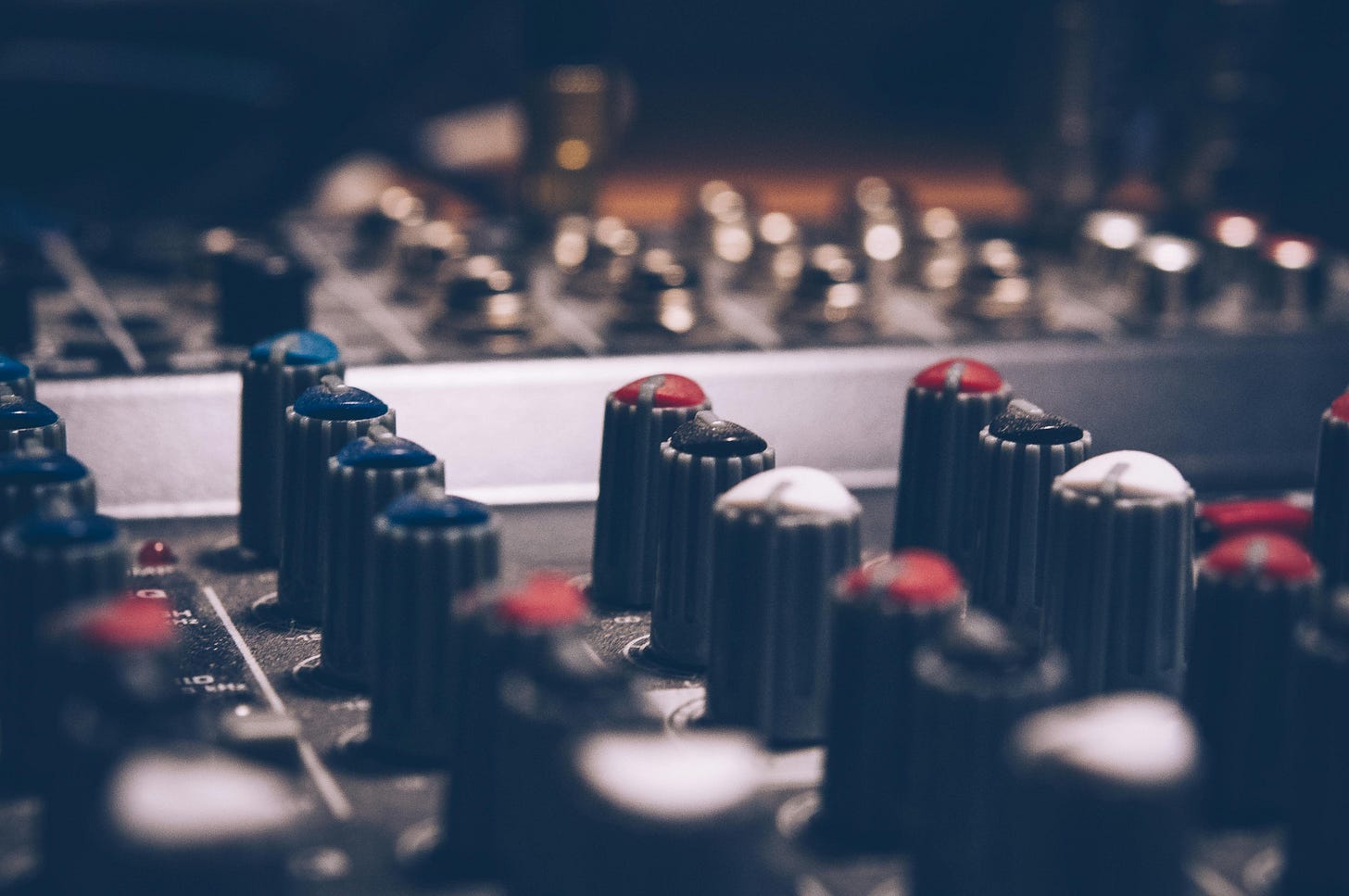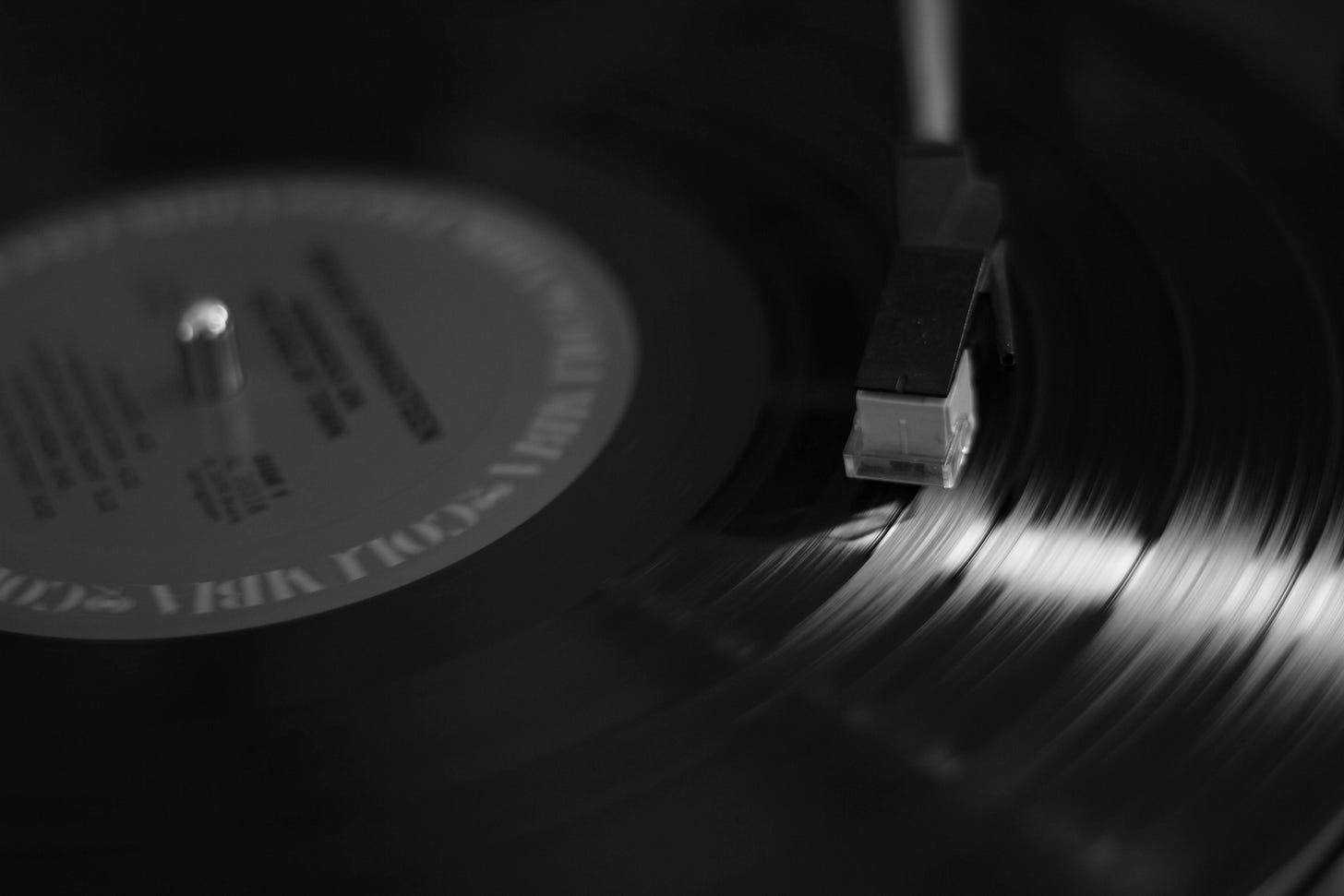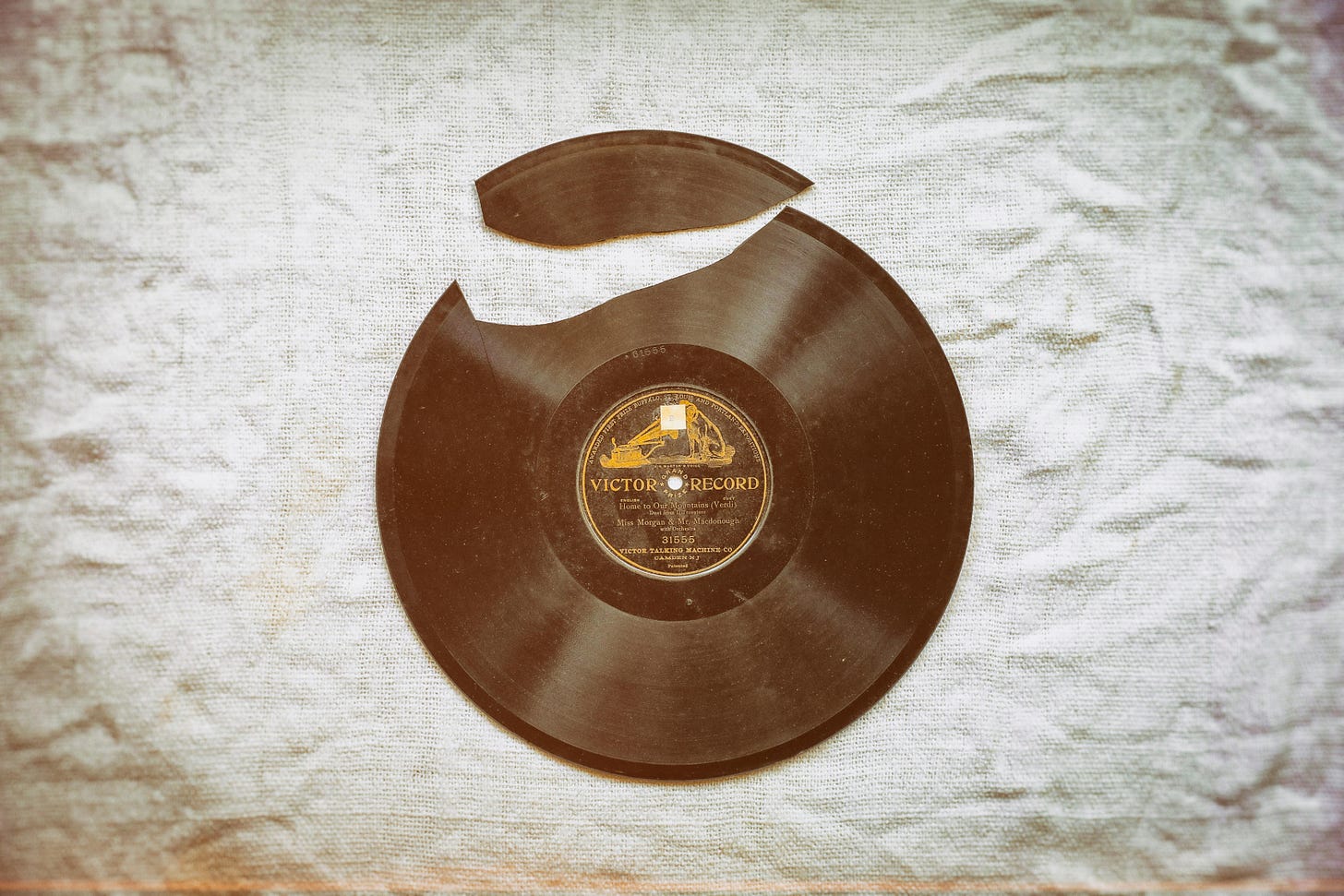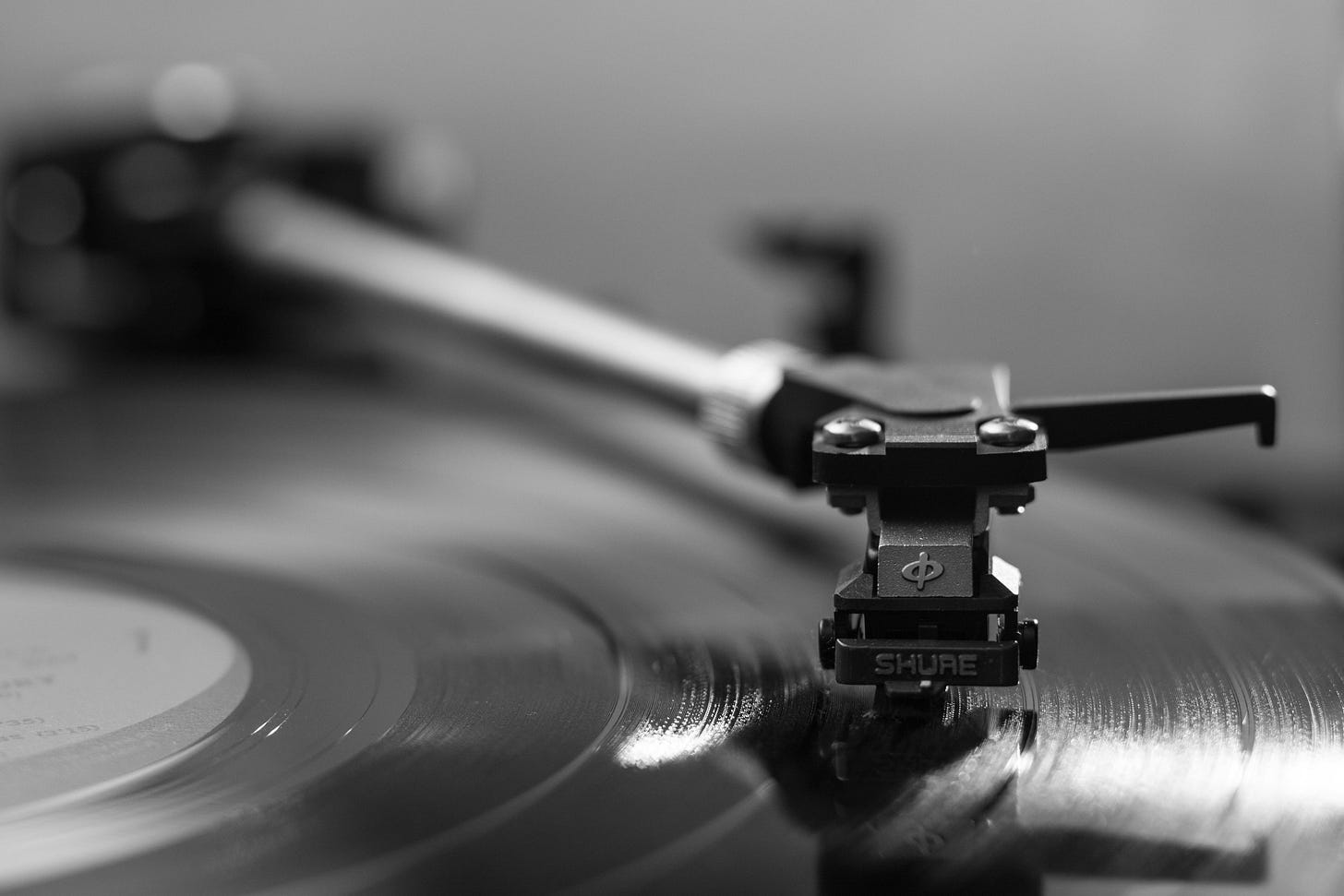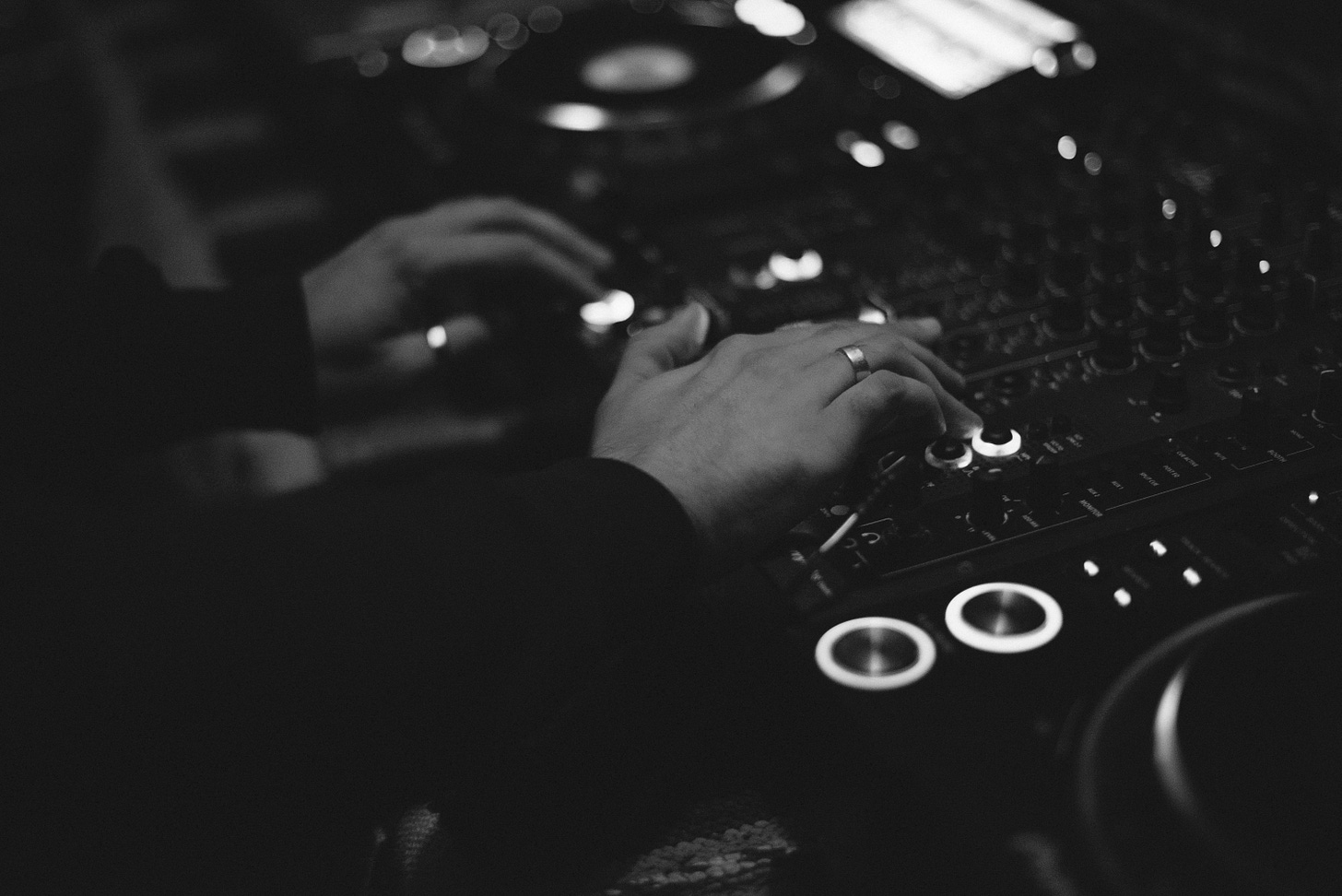Should Tango DJs Stream?
The case for and against
Introduction
In recent years, professional and amateur tango DJs around the world have increasingly turned to streaming services—particularly Spotify and Apple Music, but also Twitch—to supply music in milongas, practicas, encuentros, marathons, and even headline festivals billing top-tier maestros. This shift raises an important question: can these platforms uphold the standards of audio fidelity, cultural authenticity, and professionalism that dancers and organizers expect?
Not all streaming presents the same problem. Under the right conditions, remote DJing via Twitch expands access to skilled DJs and raises local standards—an example of technological progress yielding classic gains from trade. On-site reliance on streaming platforms such as Spotify, however, is another matter. I recognize the ingenuity of certain DJs—typically those with decades of professional dancing experience, but also a few who simply possess first-rate musical instincts—who achieve good results using such platforms. Indeed, they often surpass those who rely on pirated, low-resolution transfers—a longstanding and arguably more pervasive problem in many tango communities, which I address elsewhere on this blog. Yet the core deficiency persists: the mismatch between what a DJ must provide—faithfully reproduced golden-age recordings alongside any other requested (or appropriate) music—and what streaming platforms typically deliver—compressed audio of dubious provenance.
These and related issues, including the persistence of subpar DJ practices, will be taken up near the end of this essay—where readers seeking what I believe may be the most compelling argument in favor of on-site streaming, as a palliative, will also find it.
My perspective stems from 20 years of direct observation in hundreds of venues where Argentine tango is danced, spanning the entire quality spectrum, as well as ongoing discussions with other professionals and dancers, rather than formal empirical study. Even so, the conclusion is clear. The tango community needs high-quality, carefully curated libraries and professional DJ tools. This debate is not merely technical; it cuts to the question of whether tango’s carefully cultivated heritage can endure a widespread reliance on compressed audio whose origins are uncertain and often unsatisfactory.
1. The Potential of Remote Streaming
To begin, it is important to distinguish remote DJing from on-site reliance on streaming platforms. Remote DJing involves broadcasting a DJ set from a distant location—often through high-resolution audio services such as Twitch—to an event in real time. In many cases, this approach expands the boundaries of tango communities, bridging geographic gaps while maintaining top-tier sound quality.
For example, I recently delivered a custom set for a practica at the University of Washington tango club from a California kitchen table nearly 900 miles away, streaming lossless audio files via Twitch at 320 kbps into a concert-level amplifier, speaker, and subwoofer setup. Equipped with high-fidelity transfers derived from shellac and vinyl discs in excellent condition plus pristine tape masters, I was able to maintain reasonable fidelity and real-time interaction with the organizers, resulting in an energetic, well-received event. Several other prominent DJs, including Buenos Aires’s Vivi La Falce, have used similar methods to perform across North America and East Asia without severely compromising audio excellence, and while remaining tethered the room through a direct line to an organizer.
Remote DJing, like trade liberalization, reduces costs and expands access to specialized talent. It is not universally optimal—certain venues and audiences will require the control and immediacy of an in-person DJ. But by enabling tango communities to source high-quality sets from skilled DJs worldwide without travel expenses, logistical burdens, or carbon emissions, it increases variety in musical offerings and introduces competitive pressure that forces local DJs to refine their craft. The gains are substantial: richer musical programming, exposure to fresh ideas and techniques, and a higher overall standard. Dancers, as the ultimate consumers, benefit most—not only from differentiated services meeting a love for variety but because local DJs, facing competition, improve in response. A standout set by a visiting DJ has always been a disciplining force; remote competition merely extends its reach.
The primary risks—internet disruptions, server crashes, miscommunications, or merely the absence of full sensory engagement—are not trivial, but they are manageable. Proper testing, an emergency plan, and clear communication between DJ and organizer can minimize these risks. A remote DJ need not operate in the dark. With sufficient preparation, they can gather key information about the audience—musical preferences, skill level, and mood—allowing them to tailor the set with precision. Even mid-event, the organizer can relay feedback by chat or video, enabling real-time adjustments. A well-constructed tanda retains its power whether assembled on the fly or in advance, whether crafted in the room with all sensory cues or from a distance with informed judgment. Proximity to the pista (usually) improves quality, but preparation, knowledge, source materials, skill, and a solid audio chain matter more.
Moreover, many weekly practicas and milongas take place in environments where the stakes and baseline expectations are relatively modest, and the audience forgiving of the ocassional glitch. Think Dallas, Porto, or Kyoto—or even more casual events in major tango hubs, where dancers are less intent on a high-touch experience and more interested in socializing while experiencing a breath of fresh air from the speakers. Here, the risk-adjusted return of remote DJing is especially attractive: its logistical and cost advantages often outweigh the small probability of technical disruption and the even smaller probability of all-out disaster. Naturally, high-profile venues with heightened expectations will avoid any and all risk (and they should), down to hiring audio engineers to assist DJs. But these cases are rare.
A deeper resistance is economic. Local DJs, like domestic firms facing foreign competition, often frame remote sets as a threat to audio quality, artistic integrity, or community cohesion. In some cases, these concerns are valid; in others, they reflect a classic protectionist attitude wherein domestic firms seek trade barriers against foreign competition. But as in any market, competition spurs improvement. DJs who elevate their craft become more valuable, not less. The result is better music for all and an expanded market for those who meet the challenge.
None of this suggests remote DJing will—or should—replace in-person sets entirely. Even the staunchest free-trade advocate acknowledges the necessity of localized domestic production. The best tango communities have always balanced local talent with external influences. More precisely, local and remote DJs offer differentiated services, and as in any well-functioning market, consumers—tango dancers—benefit most from variety.
2. The Pitfalls of On-Site Streaming
Using streaming platforms such as Spotify or Apple Music in an event with a more discerning audience—even with tracks downloaded—introduces serious problems that tend to undermine the experience. While streaming platforms may advertise bitrates up to 256 kbps, 320 kbps, or even nominally “lossless,” these figures are not guaranteed and can be significantly lower in actual use. Compounding this issue is the dubious provenance of many tango recordings: unlike modern pop or classical tracks, which typically originate from professional labels, golden-age tango files are often uploaded by bootleg labels or private individuals using source files that nearly always fall far short of what is now available through premier restorationists. Consequently, audio quality varies greatly, eroding the consistency that a satisfying tango set requires. I will try to unpack all this below.
2.1 You Cannot Properly Curate a Tango Collection
No serious tango DJ can operate effectively without building a substantial library of tracks that are curated through extensive listening and metadata tagging. This is not just a mere question of owning a collection of a certain breadth and depth but involves the painstaking accumulation, comparison, and annotation of diverse recordings—verifying metadata regarding dates, orchestras, singers, musicians, arrangers, albums, and subjective notes on danceability, mood, and so forth. Streaming services, however, vest legal and technical ownership of audio files in the platform rather than in the DJ, leaving the latter with meager control over data or the ability to preserve it independently. Consequently, the iterative process of refining a DJ’s library, crucial for ensuring cohesive tandas and a breadth of musical styles, is severely constrained. With older tango recordings, where authenticity and quality can vary dramatically, such constraints are especially damaging. The result is that DJs cannot fully exercise their expertise to create the consistent and context-rich listening experiences that tango dancers rightly cherish.
2.2 You Cannot Reliably Access the Full Breadth of the Genre
Another shortcoming of on-site streaming is the absence of important recordings. Platforms like Spotify and Apple Music simply do not offer the breadth that a serious tango DJ requires. Although pop and classical genres typically enjoy robust catalog coverage, vintage tango remains haphazard. Key recordings and entire periods of an orchestra’s ouevre are often missing outright. The result is that DJs who rely on these services, even if they are willing to endure compromised sound quality, cannot piece together coherent tandas desired by discerning dancers. Faced with an incomplete catalog and the already dubious fidelity of what is included, DJs find themselves doubly constrained—forced to choose not just among inferior tracks but among far too few of them.
To be sure, streaming services do offer tracks from hard-to-find CDs that please advanced dancers and audiences that crave novelty, but these tracks often fall outside the core repertoire of events specializing in golden-age tango, and novelty-craving audiences are a small minority in most tango communities. In any event, those tracks can almost always be purchased online from digital vendors like the iTunes Store (not to be confused with the Apple Music streaming platform).
2.3 You Cannot Properly Manage Volume and EQ or Pre-Listen
One of the chief responsibilities of a tango DJ is to respond to the constantly evolving dynamics of a dance floor—adjusting volume levels, track transitions, and even metadata in real time. Streaming platforms, however, are designed for casual, passive consumption rather than professional performances—in fact, firms like Spotify forbid users from employing their software for public performances, though they do so for reasons relating to intellectual property law rather than deficiencies in DJ-specific features. These platforms lack critical features such as precise volume leveling, equalization, dynamic compression, and perhaps most importantly, reliable pre-listening options—all of which enable a DJ to adapt the set to the mood, skill, and preferences of the room on-the-fly. Furthermore, it is not possible to use plug-in filters for equalization, reverb, et cetera with streaming platform applications. Prearranged playlists might suffice for classes and (very) informal practicas but are totally inadequate for larger practicas, milongas, encuentros, marathons, and festivals. In practical terms, a streaming-only setup can force a DJ to forgo the fine-grained adjustments that distinguish a great-sounding tanda from a muddled one, thereby compromising the clear, complex sound and emotional responsiveness that tango communities increasingly expect.
2.4. You Get Poor Audio Quality
Golden-age Argentine tango (ca. early 1930s to mid-1950s) carries inherent limitations: shellac discs have a narrow dynamic range, contain surface noise, and lack the broad frequency spectrum of modern studio recordings. Yet high-quality transfers of these historic sources can preserve a remarkable depth, warmth, and emotional clarity that remain indispensable to the tango experience. The appeal of these recordings lies not in technical precision, but in their textured authenticity—the unique interplay of instruments, subtle reverberations, and the sonic “air” that surrounds the music.
Where modern studio tracks often fare well under lossy compression (e.g., Spotify’s Ogg Vorbis or Apple’s AAC), these algorithms frequently fall short when applied to vintage, analogue-to-digital transfers of shellac discs. Designed to discard data deemed inaudible to most listeners, compression systems can easily misinterpret surface noise, harmonic overtones, or delicate transients as superfluous. The net effect is a chintzy, flattened sound, devoid of the richness and nuance that define the golden-age aesthetic.
Dancers sense these degradations intuitively, even if they cannot pinpoint the precise cause. The percussive snap of the bandoneón, the silky clarity of violins, the resonance of the bass, and the tonal shifts of the singers—essential cues that guide the embrace and collective energy on the dance floor—lose their vitality. As a result, the emotional core of a tanda, which depends on these subtle auditory cues, inevitably weakens. Ensuring a coherent audio experience across multiple tracks in a milonga is already a complex undertaking; introducing subpar or inconsistent files from a streaming service can overwhelm even the most creative and experienced DJ.
While Apple Music’s AAC may be marginally better than MP3 or Ogg Vorbis, that advantage cannot reverse the damage in low-bitrate or poorly mastered source files. Apple’s “Lossless” tier, offering 16-bit/44.1 kHz ALAC, may preserve what remains of the digital signal, but it cannot restore detail that was never captured—or was stripped away by inferior transfers. Spotify faces the same fundamental hurdle. Although its desktop application allows local file playback, it restricts formats to MP3 and MP4, excluding lossless options like AIFF, WAV, FLAC, or ALAC. Moreover, downloaded Spotify tracks utilize variable-bitrate Ogg Vorbis, introducing the same compression artifacts that degrade vintage tango recordings in unpredictable ways. DJs and listeners alike remain uninformed about the provenance of these files, making it virtually impossible to isolate high-quality versions of critical tracks.
To appreciate how fidelity issues escalate in practice, consider a scenario where three popular dancers arrive in the final hour of a milonga:
• One seeks the smoky vocals of mid-1940s Echagüe and Laborde with D’Arienzo but also the fugue-like sound of Di Sarli’s Music Hall recordings.
• Another craves the gentler notes of Alberto Carol in Orquesta Típica Victor ballads, as well as the smooth sound of Berón alongside Caló, Demare, or Troilo.
• The third wants the flair of Biagi with Ibañez and Ortiz, but also the ethereal phrasing of Laurenz, De Angelis, and De Caro instrumentals.
Any experienced DJ understands the challenge of crafting a sequence of tandas that balance these varied requests while maintaining consistent audio quality—an effort that involves seamlessly putting together these different orchestras, vocalists, and moods in a sequence of six tandas. Attempting this through Spotify or Apple Music, where source materials are incomplete and resolution unpredictable, risks jarring volume shifts, mismatched pitch, and compression artifacts that distract dancers. The DJ’s responsibility is to preserve the emotional intensity of each performance and maintain the music’s coherence.
Consequently, professional tango DJs cannot rely on major streaming platforms to meet the sound quality, historical authenticity, and consistency that dancers and organizers expect. The demands of tango DJing—sustaining emotional intensity, presenting historically significant recordings in their best possible form, and managing the flow of tandas—remain incompatible with the limitations of these services. This gap in audio fidelity is not just a technical concern; it leads to classic market distortions. Event organizers, unable to distinguish expertly transferred lossless files from ad-hoc streams, often opt for cheaper or more convenient DJ services. In the language of George Akerlof’s classic paper, we risk a market for lemons, where lower-quality offerings crowd out superior but costlier alternatives. (I return to these issues in Section 3 of this essay.) The sustainable path forward is a deliberate investment in high-quality libraries, carefully sourced from dependable transfers, and played using formats and software that enable smooth playback of the music the way it was meant to be heard.
2.4. Your Professional Image May Suffer
Beyond the mechanical limitations of streaming, a DJ’s reputation rests heavily on how they source and handle their music. In tango—where audio fidelity is at least as important as the selection and flow of songs within a tanda and throughout the set—depending solely on a streaming platform can signal a lack of commitment and underinvestment. Even a DJ with great musical instincts, or great playlists, risks appearing indifferent or opportunistic if they rely on Spotify or Apple Music to DJ gigs. Moreover, if streaming platforms crowd-out the care and expertise at the heart of tango DJing, it is not just individual reputations that diminish, but also the perceived artistic stature of the entire community. This can stunt the growth of tango communities an even result in the exit of more discerning dancers, a dangeous dynamic that likely contributed to the decline of tango in several North American cities.
3. The Economics of On-Site Streaming
Tango DJing operates in a market structure that often undermines the quality of social events such as milongas. In most scenes outside of Buenos Aires and a few other major cities, a small group of organizers controls access to venues, event scheduling, and promotion. This oligopolistic structure stabilizes attendance and event coordination, and in some cases it may promote the net welfare of dancers, but it also limits competition and restricts entry for DJs outside existing networks. Hiring decisions often reflect reciprocity-driven relationships instead of pure assessments of skill. While market structure matters, the deeper structural problem is severe information asymmetry, which prevents (quite a few) organizers and dancers from reliably distinguishing between high- and low-quality DJing.
This asymmetry fuels a market for lemons dynamic. High-quality DJs invest in premium transfers, curation, and audio chains, but their ability to command higher fees depends on whether event organizers and dancers can perceive these differences. Often, they cannot. Dancers may sense that something is off—music that sounds thin, distorted, or incoherent—but they may not know what to attribute it to. Without a clear understanding of whether the issue lies in the musical assets and audio chain of DJ, they cannot effectively demand better quality. Organizers, facing the same ambiguity, often base hiring on familiarity or cost rather than a verifiable measure of skill. The result is fee compression, where DJs receive similar rates regardless of quality, weakening the incentive to invest in music and audio chains. Over time, top DJs exit, lowering the overall standard of music available to the community. Many DJs can point to skilled colleagues with extensive musical assets withdrawing from the scene due for precisely this reason.
Streaming-based DJing accelerates this process by masking differences in quality and making it easier for lower-quality entrants to appear competitive. A DJ using Spotify may seem indistinguishable from one who has invested in high-fidelity, lossless recordings, particularly when neither organizers nor audiences can perceive what is missing. If cost dominates hiring decisions, streaming DJs compete solely on price, driving down fees across the board and further weakening incentives to maintain high-quality collections.
Yet the same economic logic that underscores streaming’s risks also clarifies its primary advantage—and perhaps the most compelling argument for on-site streaming. In some scenarios, the cost of building even a minimally viable tango library—both in acquiring high-quality transfers and in developing the expertise to use them effectively—is prohibitively high. This is often the case when the long-term survival of a venue or even the entire community is uncertain. If the alternative is an incumbent DJ relying on poor transfers, compressed files, an unchanging repertoire, or weak audience engagement, then on-site streaming offers a marginal improvement. It provides fresh ideas, access to a broader selection of music in equal or better fidelity, and overlooked insights into audience preferences—all while keeping costs low. This is a second-best equilibrium: streaming sustains events that might otherwise disappear and, under the right conditions, can create the foundation for long-term improvements in curation.
That transition, however, is not automatic. If streaming remains the norm, dancers and organizers may never develop expectations for higher-fidelity sound. Elsewhere, if streaming becomes entrenched, audiences may lose such expectations entirely. Lacking clear reference points for superior quality, they may normalize lower fidelity, assuming that what they hear is as good as it gets. Fee compression and minimal barriers to entry further entrench a low-cost, low-quality model, discouraging DJs from making the investments needed to sustain high standards. Once skilled DJs exit, both their expertise and their rare recordings become difficult to replace.
Avoiding this outcome requires mechanisms that restore incentives for quality. Events explicitly marketed for superior sound could make high-fidelity music more salient to dancers and financially viable for organizers. Tiered pricing could allow DJs who verify premium equipment and curated libraries to command higher fees, differentiating their services. Mentorship structures could be geared toward improving quality rather than merely expanding the DJ pool. If such mechanisms emerge, streaming may remain a transitional tool rather than a permanent constraint on quality. If they do not, tango communities risk crystallizing a low-quality equilibrium that erodes the depth and fidelity of tango music.
Conclusion
This essay has drawn a sharp distinction between two forms of streaming: one that enhances the market for tango music, the other that corrodes it if left to run amok. Remote DJing—when backed by high-fidelity transfers and robust transmission infrastructure—extends the reach of skilled DJs, raises local standards, and broadens access to top-tier restorations and audio chains. It fosters competition on quality, rewarding those who invest in superior sound and curation.
On-site streaming, however operates in precisely the opposite direction. By imposing lossy compression on vintage recordings ill-equipped to withstand it, stripping DJs of critical playback controls, and undermining the incentives that sustain careful curation and restoration, it degrades the product. It creates a classic externality problem: the convenience of centralized streaming is not enjoyed by dancers and DJs, but the costs—lower fidelity, diminished artistry, and the erosion of investment in quality—are borne by them.
That said, the case against on-site streaming is not absolute. In communities lacking competent DJs, permitting entry through streaming may be the least-bad alternative. But the goal should be clear: help these DJs leave streaming platforms as soon as possible, steering them toward premium restorations and superior playback chains. If not, the market for high-fidelity DJing could be undermined by price competition from a lower-quality, more convenient substitute—an outcome that would push the entire ecosystem toward a race to the bottom.
If we want to dance to the best music, the market must reward those who invest in quality. We need incentives that elevate standards rather than allowing the market to drift into a low-quality equilibrium—a lemons market in which excellence cannot compete. The task, then, is not to resist technology per se, but to ensure that it strengthens, rather than erodes, the quality of dancing and listening in public tango events with paying patrons.
Acknowledgments: I am grateful to Daria Nikolaeva, Iskra Strateva, Bernhard Gehberger, Frank Jin, Tom Lee, and Vadim Vasilenko for their insights, which have sharpened some of the arguments in this essay.
© 2025 Barry Hashimoto. All rights reserved. Proprietary images and text may not be reproduced, distributed, or used in any form without the author’s permission.



